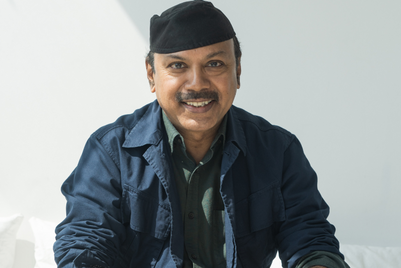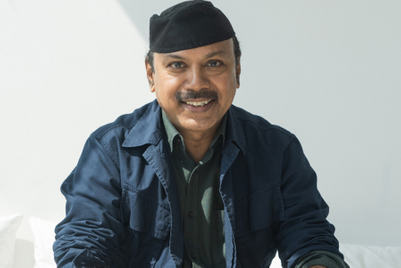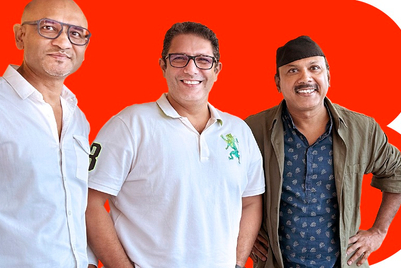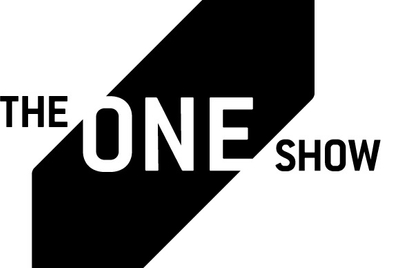
Last year, DBS Bank revealed a digital campaign that involved weekly 'releases', themed 'Chilli Paneer'. It told an engaging story unfolding in parts, keeping viewers coming for more. 'What's next?' remained the question on people's minds.
More recently came Tata Sky's love story for its daily recharge option, with each chapter of the story unveiled in a new TVC. A commercial was unveiled everyday during the ongoing Indian Premier League.
Campaign India asked adlanders if these 'continuing campaigns' deliver better. Are they more engaging?
Sheran Mehra, head -- group strategic marketing and communications, DBS Bank India, explains in the context of Chilli Paneer: "Continuing campaigns do build engagement because you want the customer to have the connect. I don’t know about conventional media, but here (with Chilli Paneer) we wanted the interaction and have that brand connect. With digital you can actually target and have a conversation. With television it’s more of a one-way conversation. We took inspiration from the way Bollywood releases its movies (releasing a film every Friday at 11 am). In part one, we took them on a journey, while in part two it was more about interaction.”
Rajiv Rao,national creative director, Ogilvy India, which created the Tata Sky series, feels that there is great merit in continuing campaigns and extending the campaign over a period of time . He notes, “It’s something you look forward to as a consumer and you’re already familiar with the idea and the brand, so that’s an advantage rather than doing something completely new.”
Josy Paul, chairman and CCO, BBDO India, offers a format-agnostic take. He explains, "If the idea is fresh and relevant and the execution is authentic and engaging, it will work. It may be a standalone film, or a campaign or movement idea that's ongoing."
He cites the example of Snickers' 'You are not you when you are hungry' campaign from BBDO US, the 'Cadbury's Silk' series in India, Cadbury 5 Star TVCs with 'Ramesh-Suresh', and the continuing campaign done by BBDO India for Gillette 'WomenAgainst Lazy Stubble.'
Paul adds, "Year on year you see a new insight and a freshexecution around the same broad theme. There are so many examples. And yet there is Apple '1984' the film that ran once on SuperBowl. It's a great example of a super hit standalone idea! So who is to say what works betterthan what. Everything works if you get all the moving parts right. Why look for ready formulas. There is no security, only opportunity."
Zarvan Patel, founder, Ideas@Work, however notes, “Anything continuing and still fresh will always give you better engagement and brand recognition. If you track campaigns globally or locally, you’ll notice that brands that engage in consistent messaging over long periods are large or global brands. It makes sense to hold onto your brand values and use it consistently over a period of time."
So if continuing campaigns deliver better, why is it that we don’t see more of them?
According to adlanders, there multiple reasons for this.
Partha Sinha, director and chief strategy officer, Publicis South Asia, observes, “The biggest requirement for a serialised campaign is money. It’s only the advertisers who have a high exposure and production budget who can afford to do this. This is just another form of storytelling and at times the idea could be more conducive to a serialised story. But it’s a risky proposition. It presupposes huge engagement from the audience and if that engagement is not there, it becomes an exercise where only the people who have written the story feel good while the general audience couldn’t care less. Unless the story is dramatically gripping, this format is bound to have a lower return on investment.”
Rao, concurring in part, notes that storytelling isn’t as formulaic as one might imagine. He explains, “If people are entertained by the messaging, it does not really matter what format you use in your messaging. It also largely depends on the objective of the campaign. A connected campaign can backfire if the idea is boring.”
Mehra too echoes this view. She begins by calling this kind of a campign ‘interactive’.
She says, “A lot of times it depends on what the objective of the campaign is. A lot of times you will have to do a one-way communication if you want to just disseminate information to the customer. In Chilli Paneer 1 we wanted to take people on a journey, while in Chilli Paneer 2 we wanted to interact with our audience and give them control.”
"More brands do want to do this, but it all depends on what the objective of the campaign is," she adds.
Another factor is the platform the campaign comes out on. Category too plays an important role in the execution of such a campaign.
The continuity theme was most noticeably adopted by Star Sports during the recently concluded ICC Cricket World Cup, though with series a 'Mauka Mauka' films, which arguably were not a 'single story told in parts'.
Says Sinha, “Typically to be successful with this format, you need a habit-forming platform. Especially something which has an intense burst of habit-forming viewership – like World Cup or IPL or a four or five-week show of high interest. The ideal way to do it `would be to gauge the reaction and do a course correction depending on the mood and environment.”
Rao reiterates the view that category plays a role in determining the kind of campaign route. “You can have a connected thought only with certain categories. For example, for some brands, I may not have much to say other than one strong point so then, I can take that thought forward year after year. Then there are categories where you have to say something new every year, in which case continuing campaigns don’t work as well," he says.
So, are we likely to see more of the continuing kind of storytelling?
The overall view is that digital would most definitely see a lot more of this kind of advertising. TV may not be flexible enough for this form of storytelling to become a mainstay.
Patel is an advocate for this kind of storytelling. He notes, “Unless something is not working for you, it’s better to stick to the niche territory you’re in and hold onto your brand messaging for as long as you can."
On the spread of continuing stories on digital, Sinha says, “My guess is that it will improve further thanks to the latitude offered by the web and can truly become content (as against ads masquerading as content).
“The one example that comes to mind is ‘The beauty inside’ done by Intel and Toshiba. That, to me, is the true power of serialised storytelling for a brand. I would look forward to efforts like that from Indian brands.”
BBDO's Paul surmises underlining that there can be no winning format formula: "Standalone ads work. Ongoing campaigns work. Look at TV serials… they work too. So advertising that follows a serial format should also work – depending on the idea, format and execution. Remember Godfather 1, 2 and 3. That worked! Today we are seeing Hangover 1,2,3. They work too. But then so do one-offs. The truth is there are no rules, only rulers."


.jpg&h=334&w=500&q=100&v=20250320&c=1)
.jpg&h=334&w=500&q=100&v=20250320&c=1)

.jpg&h=334&w=500&q=100&v=20250320&c=1)


.jpg&h=334&w=500&q=100&v=20250320&c=1)


.jpg&h=334&w=500&q=100&v=20250320&c=1)





.jpg&h=268&w=401&q=100&v=20250320&c=1)


